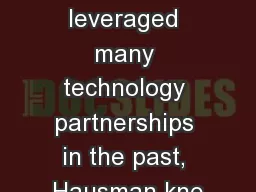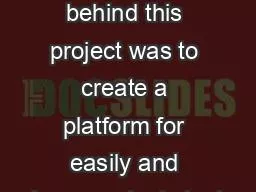PPT-WWW – Why Work with Widgets?
Author : natalia-silvester | Published Date : 2017-11-11
Working with widgets to clear out clutter and organize your course in D2L Alison Hedrick and Debbie Geist FirstYear and Transition Studies University College
Presentation Embed Code
Download Presentation
Download Presentation The PPT/PDF document "WWW – Why Work with Widgets?" is the property of its rightful owner. Permission is granted to download and print the materials on this website for personal, non-commercial use only, and to display it on your personal computer provided you do not modify the materials and that you retain all copyright notices contained in the materials. By downloading content from our website, you accept the terms of this agreement.
WWW – Why Work with Widgets?: Transcript
Download Rules Of Document
"WWW – Why Work with Widgets?"The content belongs to its owner. You may download and print it for personal use, without modification, and keep all copyright notices. By downloading, you agree to these terms.
Related Documents














![[BOOK]-Status: Why Is It Everywhere? Why Does It Matter?: Why Is It Everywhere? Why Does](https://thumbs.docslides.com/956296/book-status-why-is-it-everywhere-why-does-it-matter-why-is-it-everywhere-why-does-it-matter.jpg)